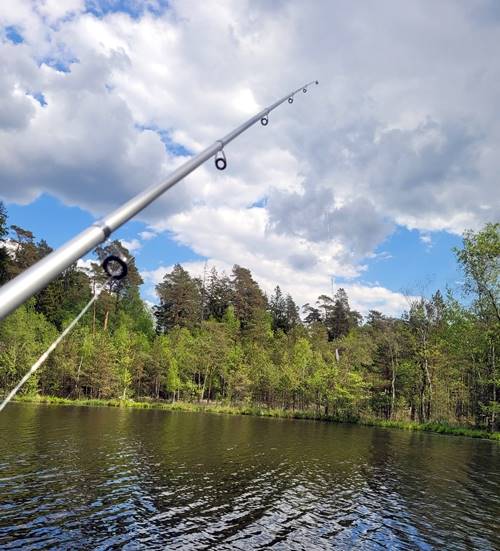Fishing success begins the moment your bait hits the water. Whether you’re a weekend angler or a seasoned angler, choosing the right fishing bait can mean the difference between an empty rig and the fight of your life. In this guide, we’ll share everything we’ve learned—from matching bait to species and conditions to our personal, battle-tested tricks—to help you land more fish.
Why the right fishing bait matters
• Maximize Hook Ups: Fish won’t bite what doesn’t look or smell like a meal.
• Save Time & Money: No more trial and error—targeted bait selection pays off.
• Gain Confidence: Knowing you’ve got the best fishing bait e.g. for bass, trout, or catfish lets you fish smarter.
1. Know your target: Species‑specific baiting
Different fish have different cravings. Here’s our go‑to cheat‑sheet:
- Bass: Soft plastics (worms, creature baits), spinnerbaits, live minnows or crayfish.
- Trout: Nightcrawlers, grasshoppers, salmon eggs, and small inline spinners.
- Catfish: Chicken liver, stink baits, cut shad, and dough baits.
- Panfish (Bluegill/Crappie): Tiny worms, maggots, micro jigs.
- Saltwater (Redfish/Flounder/Snapper): Shrimp, squid, pilchards, and soft‑plastic swimbaits.
2. Match fishing bait to conditions
Water Clarity & Color
- Murky Water: Bright, flashy lures or strong‑dye baits that cut through the gloom.
- Clear Water: Natural hues—olive, brown, pearl—that mimic local forage.
Temperature & Seasonality
- Cold Months: Slow‑sinking, injured‑bait imitations (e.g., suspending jerkbaits).
- Warm Months: Fast‑retrieving spinners and crankbaits to trigger aggressive strikes.
3. Fishing bait types explained
- Live Bait: Worms, minnows, shrimp—undeniable realism and scent.
- Artificial Lures: Hard baits, soft plastics, jigs, spoons—durable and reusable.
- Cut Bait: Fresh fish chunks (mullet, mackerel)—premium attraction for big predators.
- Dough & PowerBaits: Scented dough that stays on the hook—excellent for carp and catfish.
- Scent‑Enhanced Baits: Infused with chemical attractants to spark reaction strikes.
4. The art of presentation
- Depth Control: Use sinkers or float rigs to keep your bait in the strike zone.
- Retrieval Speed: Experiment with slow drags, erratic twitches, or steady burns.
- Patience & Observation: If bites dry up, switch bait style, color, or location.
5. Our proven tips for next‑level baiting
Over years on the water, we’ve refined these techniques—sometimes after dozens of hours of trial and error—to turn slow days into must catch outings.
- Color‑Match to Local Prey
One spring morning, we spotted yellow perch schooling near shore. Switching from green‑pumpkin worms to a bright “Perch Glow” soft plastic doubled my hook‑ups instantly.
Pro tip: watch for surface activity, then match lure color and size exactly. - Rig Two Baits on One Line
When catfish were finicky last summer, we rigged a live shad chunk above a scent‑dough ball below. The combo created a scent trail that kept fish biting for an hour.
How we set it: Use a two‑hook dropper loop rig—heavier cut bait on the top hook, dough ball on the bottom. - “Twitch and Pause” on Artificials
A steady retrieve felt predictable, so we started twitching my jerkbaits twice and pausing for 3–4 seconds. That mimic of an injured baitfish triggered savage reaction strikes—especially in cooler water. - Keep Bait Cool—and Alive
Losing bites because our minnow bucket heated up taught me this lesson. Now we use an insulated bucket with a battery‑powered aerator. Live bait that’s lively equals more bites. - Switch Presentation Every 20 Minutes
On a four‑hour trip, we consciously change bait style or cast direction every 20 minutes. No bites? Pivot: new color, new speed, or a new spot. Fish can key in on a rhythm—keep them guessing.
6. Seasonal strategy table
Season | Bait Style | Pro Tip |
Spring | Live minnows, small crankbaits | Fish slower—cold water lowers fish metabolism |
Summer | Topwater plugs, spinnerbaits | Early morning/evening |
Fall | Jerkbaits, soft plastics | Match baitfish size for schooling predators |
Winter | Jigging spoons, suspending jerkbaits | Fish deeper |
In conclusion, choosing the right bait for fishing is a critical skill that can make a significant difference in your fishing experience. By researching the fish species, considering the fishing location and water conditions, experimenting with different baits, using the right presentation technique, and being observant and adaptable while fishing, you can increase your chances of success on the water. Remember that fishing is not just about catching fish but also about enjoying the outdoors and the thrill of the chase.
You may also be interested in our articles on these topics: 1) Fishing gear every angler should have; 2) Top 10 Freshwater Fishing Rods of 2025; 3) Tips for maintaining fishing gear to prolong its lifespan.
Affiliate disclosure: This post may contain affiliate links. If you use them to make a purchase, we may earn a commission at no extra cost to you. As always, we only recommend gear we’ve tested or truly believe in.

